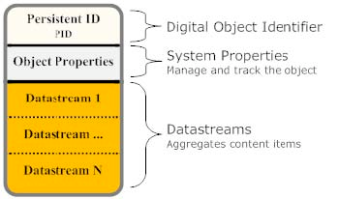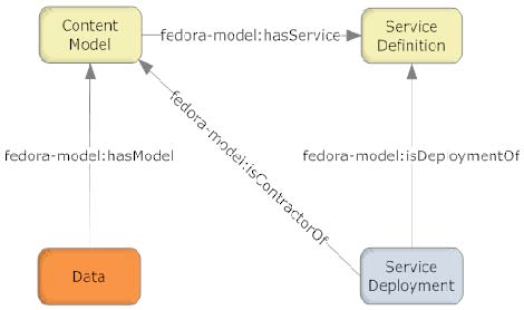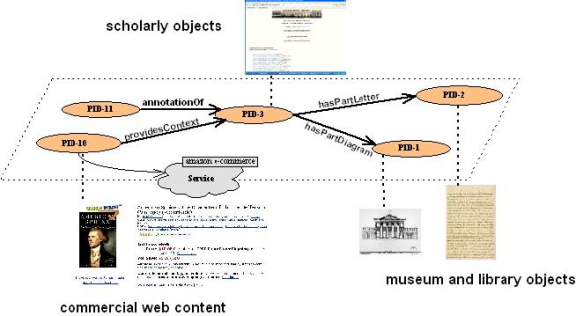Page History
...
Figure 1 below shows the basic data model of a Fedora digital object.
Figure 1: Fedora Digital Object Data Model
...
Fedora digital objects can be related to other Fedora objects in many ways. For example there may be a Fedora object that represents a collection and other objects that are members of that collection. Also, it may be the case that one object is considered a part of another object, a derivation of another object, a description of another object, or even equivalent to another object. For example, consider a network of digital objects pertaining to Thomas Jefferson, in which scholarly works are stored as digital objects, which are related to other digital objects representing primary source materials in libraries or museums. The composite scholarly objects can be considered a graph of related digital objects. Other types of objects can also be related to the scholarly object over time, for instance annotations about the scholarly object can be created by others and related to the original object. Also, digital objects can be created to act as "surrogates" or "proxies" for dynamically produced web content such as an Amazon page for a book relevant to the scholarly object. Such a network of digital objects can be created using Fedora, which in the abstract, would look like Figure 4.
Figure 4: A Network of Digital Objects
...
Overview
Content Tools


